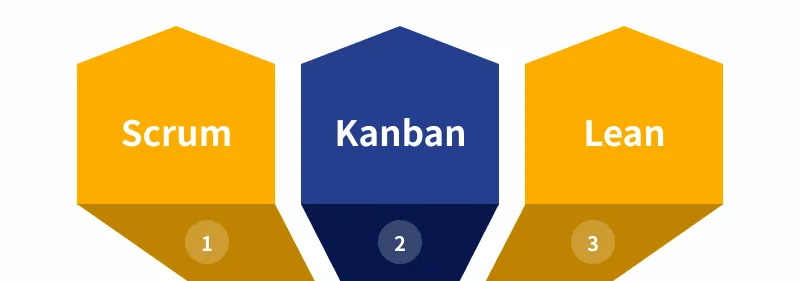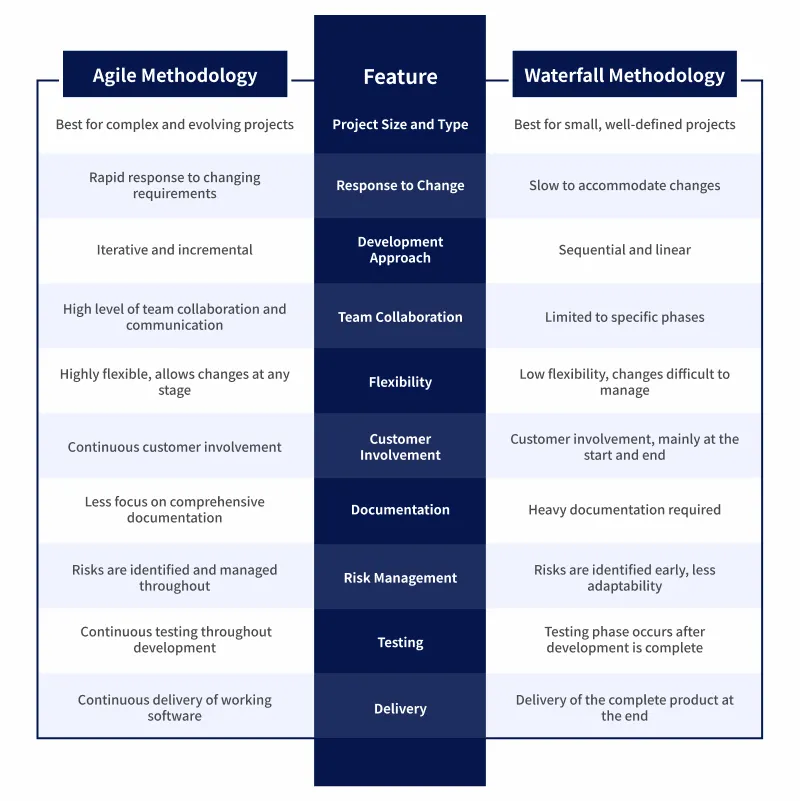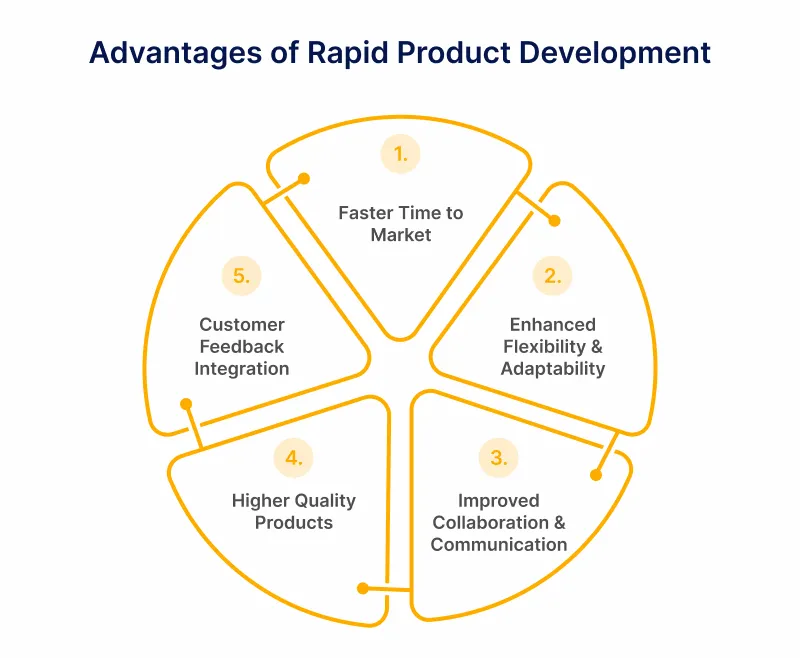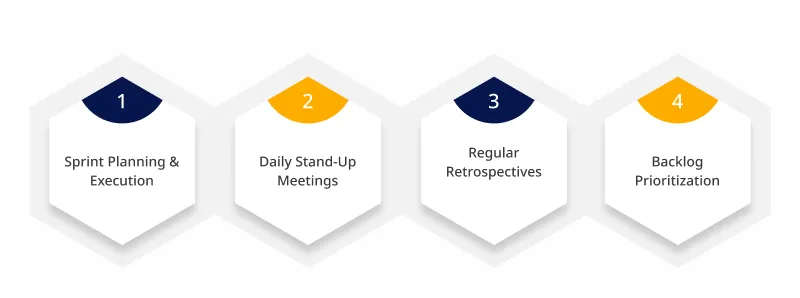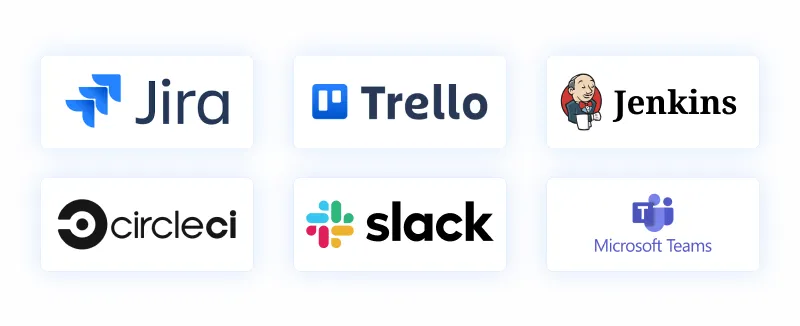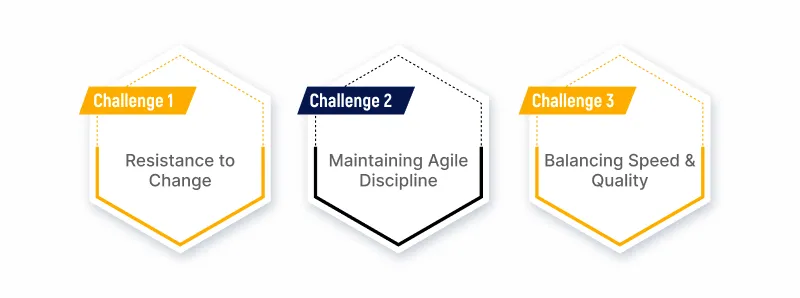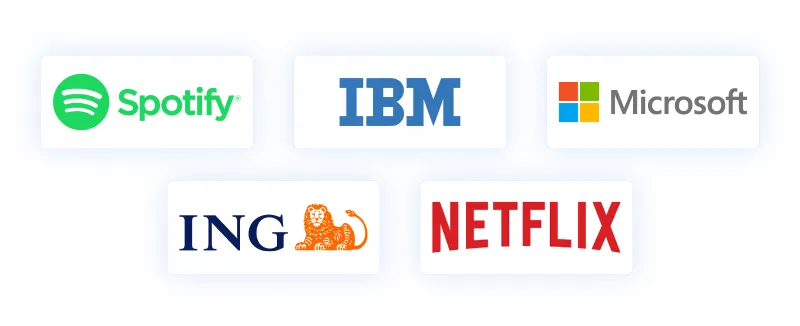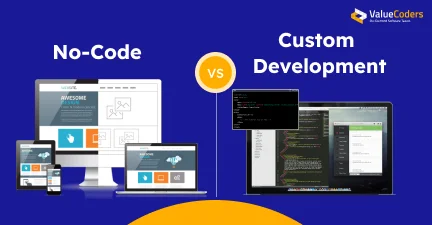Are you going to launch your product in the market?
If yes, then you must be ready with all your strategies to ensure product success in near future.
A good product launch strategy is the main parameter that makes the product gain traction. This is why most of the businesses are opting for Agile methodologies.
A Forbes report claims that 70% of companies report a positive impact on the attention and focus on projects with Agile.
Companies can use agile project to enhance collaboration, improve flexibility, and reduce time-to-market. This blog post presents the core principles of Agile, its benefits for product development, real-world success stories, and practical tips for implementation.
Discover how Agile project management can revolutionize your product launch strategy and keep you ahead of the competition.
Understanding Agile Methodology
Agile methodology is rooted in the Agile Manifesto. It mainly emphasizes on four core values:
1. Individuals and interactions over processes/tools
2. Working software over comprehensive documentation
3. Customer collaboration over contract negotiation
4. Responding to change by following a plan
The above-discussed values are further supported by important principles that focus on delivering value to customers through continuous delivery, embracing change, maintaining a sustainable work pace, and boosting collaboration among cross-functional software teams.
Also Read: Accelerating Time To Market With Agile Software Development
Key Components of Agile Project Management
Have a look at the core components of Agile project management below.
Scrum
It is a popular Agile project management framework that structures product development process into sprints, typically lasting two to four weeks. It includes the following roles:.
- Scrum Master
- Product Owner
- Development Team
Some of its key events include Sprint Planning, Daily Stand-Ups, Sprint Reviews, and Sprint Retrospectives. These events ensure regular progress & continuous improvement.
Kanban
It focuses on visualizing the workflow and managing work in progress. By using a Kanban board, Agile project management teams see the status of tasks at a glance.
They further identify bottlenecks and optimize their processes. Kanban approach emphasizes continuous delivery and flexibility. This allows software teams to adapt quickly to changes.
Lean
Lean principles mostly maximize value by minimizing waste. This approach focuses on delivering only what is necessary and valuable to the customer. This improves efficiency and reduces unnecessary activities.
Furthermore, this approach encourages iterative progress and emphasizes the importance of feedback & learning.
Harness the power of Agile methodology for faster time-to-market.
Agile Methodology vs. Traditional Waterfall Methodologies
Agile Vs Waterfall, both methodologies are the two distinct approaches to project management.
Waterfall is a linear & sequential approach where each phase (i.e. requirements, design, development, testing, deployment) is completed before moving on to the next. This leads to longer development cycles and difficulty adapting to change once the project is underprocess.
On the other hand, Agile is an iterative and incremental approach. It breaks projects into smaller, manageable units called iterations/sprints, allowing for continuous feedback and adjustment. This flexibility enables software teams to respond to changes more effectively and deliver value to customers faster.
Let’s understand this via a tabular comparison of the two:
Benefits of Agile for Rapid Product Development
Agile project management brings in numerous Agile methodology benefits for quick product development. Have a look at the list of key advantages of Agile as given below:
1. Faster Time to Market
With a competitive edge and the ability to respond to market demands promptly, the Agile approach ensures that products reach the market faster
- Iterative Development Cycles: Agile methodology employs short, iterative development cycles known as sprints. Each sprint focuses on delivering a functional part of the product, allowing teams to release updates and new features more frequently.
- Minimum Viable Products: Agile emphasizes the creation of MVPs, i.e. basic versions of the product with essential features. This approach enables businesses to launch the product quickly, gather user feedback early, and make necessary improvements as per real user insights.
2. Enhanced Flexibility & Adaptability
The following aspects of Agile contribute to a dynamic development environment where products evolve efficiently & effectively. This ultimately leads to faster and more successful product launches.
- Ability to Pivot & Make Changes: Agile methodologies prioritize responsiveness to change. By incorporating real-time feedback from users and stakeholders, software teams can quickly adapt their strategies and make necessary adjustments to the product.
- Reduced Risk of Project Failure: Continuous evaluation and adjustment reduce the risk of project failure. The agile approach allows for constant course corrections, minimizing the impact of potential issues and ensuring that the project stays on track.
3. Improved Collaboration & Communication
The traditional waterfall model often struggles to keep up with the demands of rapid innovation. This is where Agile methodologies offer a flexible and iterative approach that empowers businesses to launch products faster and adapt to changing market demands.
- Cross-functional teams working together: Agile encourages the formation of self-organizing and cross-functional teams. This close collaboration breaks down silos and ensures everyone is working towards a shared goal.
- Regular meetings (stand-ups, sprint reviews): Agile methodologies emphasize frequent communication through short, focused meetings. These meetings provide a platform for team members to share progress and identify roadblocks.
4. Higher Quality Products
Agile project management over traditional methods yields high-quality products in the market. It involves:
Continuous Testing & Integration:
- Agile promotes regular testing throughout development, ensuring issues are identified and addressed promptly.
- Continuous integration allows for code to be frequently merged and tested, maintaining a stable and functional product at all stages of Agile hardware development.
- This ongoing validation helps in catching defects early, reducing the risk of significant issues later in the development cycle.
Early Detection & Fixing of Defects:
- Agile project management ensures that testing is performed at the end of each sprint, enabling the early detection of defects.
- Hire software developers who use immediate feedback to fix issues quickly, preventing them from becoming major problems.
- Early resolution of defects leads to a more reliable and robust product, enhancing overall quality and user satisfaction.
5. Customer Feedback Integration
By using customer feedback effectively, the Agile approach ensures that the product evolves in alignment with user needs. This reduces the time to market and increases the overall success rate of the product launch.
- Incorporating Customer Feedback Quickly: Agile methodologies are designed to integrate customer feedback at every stage of the development process. The tools provide structured opportunities for gathering insights from end-users and stakeholders.
- Accelerates Product Improvement: By incorporating feedback swiftly, software teams make immediate adjustments to the product. The ability to quickly adapt based on user input not only speeds up the development cycle but also increases the likelihood of product success in the market.
Experience unparalleled flexibility and speed in product development.
Key Agile Practices That Accelerate Product Launches
Have a look at the key Agile practices to deploy if you want to launch your product faster in the market:
1. Sprint Planning & Execution
Agile methodology divides the entire project into smaller and more manageable segments called sprints. It usually lasts two to four weeks. This segmentation allows teams to focus on specific tasks and deliverables within a short time frame.
During sprint planning, the team outlines specific goals and deliverables to be achieved by the end of the sprint. This includes:
- Defining the scope of work
- Prioritizing tasks
- Assigning responsibilities
Clear objectives ensure that everyone on the team understands what needs to be accomplished. This leads to more focused efforts and higher productivity.
2. Daily Stand-Up Meetings
These meetings are the backbone of Agile methodology that keeps the development team aligned and addresses roadblocks promptly. These brief, focused meetings (typically lasting 15 minutes) are held at the same time each day and involve all team members.
Each participant shares their progress, plans for the day, and any obstacles they face. This transparency ensures everyone is on the same page, thus fostering better communication and collaboration.
The immediate identification of any type of roadblock is a significant benefit of daily stand-ups. When issues are raised, the team quickly brainstorms solutions or reallocates resources to tackle the problem, thus preventing delays.
Moreover, daily stand-ups reinforce accountability, as team members regularly update each other on their progress, ensuring everyone stays focused on their tasks and deadlines.
3. Regular Retrospectives
Regular retrospectives are one of the important parts of Agile methodology. At the end of each sprint, the team gathers to review what went well, what didn’t, and how processes can be improved for the next sprint.
This reflective practice encourages continuous improvement, spreading a culture of learning and adaptation. By identifying bottlenecks, inefficiencies, and successes, teams can implement changes that enhance productivity and streamline workflows.
Regular retrospectives ensure that each sprint builds upon the lessons learned from the previous one, leading to progressively better performance and faster product development with Agile.
By continuously refining their approach through retrospectives, Agile teams can more effectively address challenges, optimize processes, and accelerate product launches, ensuring that they deliver high-quality products more efficiently.
4. Backlog Prioritization
By implementing backlog prioritization and maintaining an adaptive mindset, Agile project management teams can accelerate product launches while ensuring they deliver high-value features.
- Most Critical Features Are Developed First: By ranking items in the backlog according to their importance, teams ensure that the most critical and beneficial features are tackled first. This approach helps deliver core functionalities early, which can significantly enhance user satisfaction and product usability.
- Continuous Re-Evaluation of Priorities: Regularly re-evaluating & adjusting priorities ensures that the development team is always aligned with the latest market demands, user feedback, and business goals. This dynamic approach allows teams to pivot quickly, incorporate new insights, and make necessary adjustments to the product roadmap.
Discover how Agile practices can revolutionize your product lifecycle.
Tools & Technologies Supporting Agile Development
The following agile development tools are essential for supporting Agile development as these enable teams to streamline workflows, enhance collaboration, and accelerate product delivery.
By using the following listed tools & platforms, businesses can effectively implement Agile practices and achieve faster, more efficient product launches.
Jira
A highly flexible project management tool designed specifically for Agile teams.
- Supports Scrum and Kanban boards, backlog prioritization, sprint planning, and detailed reporting.
- Helps teams track progress, manage tasks, and maintain transparency throughout the development process.
Trello
A user-friendly, visual project management tool.
- Uses boards, lists, and cards to organize tasks and projects.
- Ideal for smaller teams or simpler projects, Trello provides an intuitive way to visualize and manage work.
Jenkins
An open-source automation server for continuous integration and continuous delivery (CI/CD).
- Automates the building, testing, and deployment of software.
- Ensures that code changes are integrated and deployed smoothly, enhancing the speed and reliability of releases.
CircleCI
A cloud-based CI/CD tool.
- Provides powerful automation capabilities, easy integration with various version control systems, and support for Docker.
- Simplifies the CI/CD process, allowing teams to build, test, and deploy applications faster.
Slack
A popular communication platform for teams.
- Real-time messaging, file sharing, and integration with numerous other tools and expert Agile consulting services.
- Facilitates seamless communication and collaboration, keeping team members connected and informed.
Microsoft Teams
A collaboration tool that integrates with the Microsoft Office suite.
- Chat, video conferencing, file storage, and app integration.
- Enhances team collaboration and productivity by providing a centralized hub for communication and work.
Also Read: 9 Reasons Agile Software Development Is Best For Modern Businesses
Challenges & How to Overcome Them
By addressing the following challenges using defined strategies in Agile project management, organizations can successfully implement Agile practices, thus accelerating product launches without sacrificing quality.
Challenge 1: Resistance to Change
Transitioning to an Agile approach can be challenging, especially in organizations accustomed to traditional methodologies.
Solution: It is crucial to invest in comprehensive training & education programs that highlight the benefits of Agile.
Engaging leaders and influencers within the organization, regular workshops, open communication channels, and incremental changes can help employees gradually adapt to the new approach.
Challenge 2: Maintaining Agile Discipline
One of the significant challenges in Agile adoption is maintaining discipline in following Agile practices.
Solution: Organizations should establish clear guidelines and processes that are regularly reviewed and refined. Appointing dedicated Agile coaches or Scrum Masters can ensure that teams adhere to Agile methodologies and principles.
Regular retrospectives and feedback loops can help identify areas where discipline is lacking and implement corrective measures to reinforce consistent Agile practice adherence.
Challenge 3: Balancing Speed & Quality
In the race to deliver products quickly, there is a risk of compromising on quality.
Solution: To balance speed with quality, Agile teams should adopt best practices such as automated testing, continuous integration, and continuous delivery. These practices enable rapid development cycles while ensuring that each increment meets quality standards.
Emphasizing a culture of quality, where every team member is responsible for maintaining high standards, can also help. Incorporating regular code reviews, pair programming, and incremental delivery of functional prototypes ensures that quality is embedded into the development process, even when operating at high speeds.
Maximize efficiency and adaptability in your projects.
Case Studies/Real-World Examples
Agile project management is the need of today’s hour. Let’s have a look at the top 5 companies who implemented Agile methodology in their project:
Spotify
The leading music streaming service company adopted Agile with cross-functional squads using Scrum and Kanban.
Results: Faster feature releases, enhanced collaboration, increased innovation, and improved user experience.
IBM
The global technology & Agile software development company implemented Agile across various departments, particularly software development.
Results: Accelerated product development cycles, enhanced flexibility to meet client needs, and increased employee engagement.
Microsoft
The tech giant transitioned too Agile to develop products like Windows and Office.
Results: Reduced time-to-market, improved software quality, and better alignment with customer requirements.
ING
The International banking group shifted to an Agile organizational structure with empowered, autonomous teams.
Results: Faster delivery of digital banking solutions, enhanced customer satisfaction, and a more innovative culture.
Netflix
The streaming service, content creator and expert software consulting services provider utilizes agile practices in both software development and content production.
Results: Rapid release of new features and content, better responsiveness to user feedback, and maintenance of a competitive edge in the streaming industry.
Conclusion
So far, we have seen that adopting an Agile approach is a boon to modern businesses looking to launch products faster and more efficiently. By increasing collaboration, enhancing flexibility, and focusing on continuous improvement, Agile methodologies empower software teams to deliver high-quality products that meet market demands swiftly.
Remember, you can not only accelerate product development with Agile but also drive innovation and customer satisfaction. So, what are you waiting for?
Connect with our tech experts at ValueCoders (a leading Agile offshore software development company), who use Agile approach and Agile project management tools to develop innovative projects for its clients. We have successfully delivered, 4200+ projects to date and still counting since 2004.

